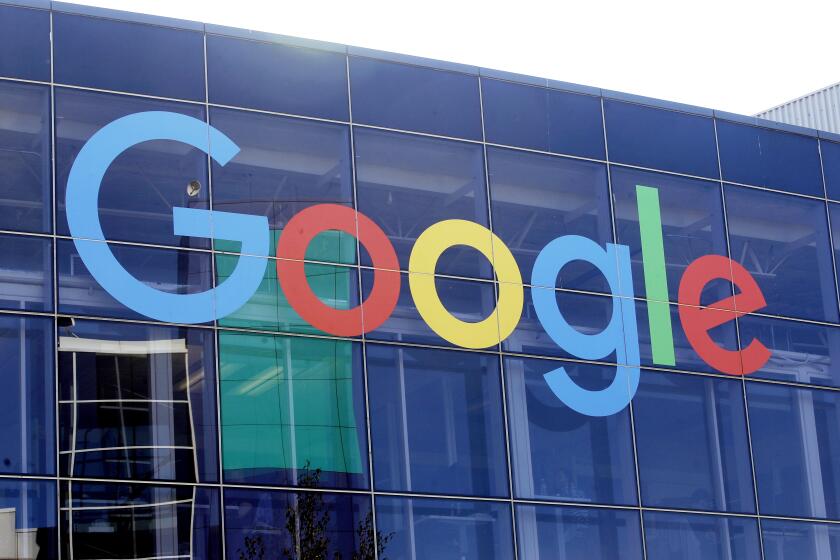PG&E; Bouncing Back From Fiscal Brownout
- Share via
Chastened by a three-year trek through bankruptcy that was sparked by California’s energy crisis, Pacific Gas & Electric Co. is again embracing the premise that slow and steady wins the race.
The state’s largest utility is on the rebound with a focus on its core business -- providing power at regulated rates in Northern and Central California -- while trying to bolster its financial health, improve service and secure enough electricity for customers.
A lack of power supplies in 2000 and 2001 helped trigger the energy crisis “and drove both us and [Southern California] Edison to financial distress, drove us completely to our knees,” Peter A. Darbee, the new chief executive of the company’s San Francisco-based parent, PG&E; Corp., said Friday at an investor conference in New York.
It was “a situation we don’t want to revisit and are committed to ensuring never happens again,” Darbee said in his first appearance before analysts and investors since being named CEO in December.
But PG&E; still has its doubters.
“We would agree that they can do a whole lot better, and the proof will be in the pudding,” said Bob Finkelstein, executive director of the Utility Reform Network, a consumer advocacy group in San Francisco. “We’ve heard things like this before.”
The utility, which turns 100 this year, serves 4.9 million electricity customers and 4.1 million natural gas customers. Overall, PG&E; Corp. has 20,200 employees and generated revenue last year of $11.1 billion.
The utility, but not the parent company, filed for Chapter 11 bankruptcy reorganization in April 2001 after running up $9 billion in electricity debt during the energy crisis.
PG&E;’s National Energy Group, the company’s venture into the less regulated world of energy trading and independent power-plant building, filed for bankruptcy protection in July 2003. The subsidiary, which was slammed by a prolonged slump in power prices, subsequently was jettisoned.
Now, PG&E; is “a big turnaround” and again “a pure-play regulated story,” analyst Kit Konolige of Morgan Stanley & Co. said in a note to clients Friday.
Operating within a settlement plan that PG&E; struck with the California Public Utilities Commission in late 2003, the utility said it expected moderate, single-digit growth in the coming years.
The settlement with the PUC amounted to a rescue plan that helped PG&E; repay billions of dollars in creditor claims and get out of Chapter 11 in April. But the plan also saddled its customers with added costs, and Finkelstein said he feared that PG&E; would press the PUC to raise rates to satisfy the growth forecasts it was providing Wall Street.
PG&E; said its earnings from operations should range from $2.15 to $2.25 a share this year, climb as high as $2.40 in 2006 and keep rising by an average of 4% to 6% annually through 2009. PG&E; earned $2.12 a share from operations in 2004.
The utility hopes to accomplish that or even boost its earnings goals by making investments that the PUC would agree warrant higher customer rates. Darbee said PG&E; planned to pour $2 billion annually into new and existing generation and transmission facilities over the next few years, up from $1.6 billion to $1.7 billion in recent years.
PG&E; has “adequate power supplies in place between now and 2008” but needs to ensure it has additional capacity after that, he said, noting that supply forecasts for Southern California aren’t as sanguine. State energy officials said this week that parts of the Southland could endure blackouts this summer if the region suffered from unusually hot weather.
Darbee also vowed improvements in PG&E;’s service and in the way it communicates its strategy and goals. During the bankruptcy proceedings, “our reputation suffered” because the utility failed to keep customers and investors informed, he said.
Darbee also wants to invest about $1 billion in the coming years to install automated meter readers that would replace most of the electric and gas meters now read manually. The new technology would let PG&E; know more quickly when and where there are outages, he said.
PG&E; lately has suffered customer complaints about estimated bills and billing delays resulting from meters that couldn’t be read. The automated meters, Darbee said, would give the utility a more accurate and timely look at actual usage.
PG&E;’s recovery is making progress. The company recently reinstated its dividend, at 30 cents a share per quarter, and Standard & Poor’s Corp. last week raised PG&E;’s corporate credit rating.
The company’s stock has climbed 27% over the last 12 months and gained 16 cents to $35.51 a share Friday on the New York Stock Exchange.
More to Read
Inside the business of entertainment
The Wide Shot brings you news, analysis and insights on everything from streaming wars to production — and what it all means for the future.
You may occasionally receive promotional content from the Los Angeles Times.











